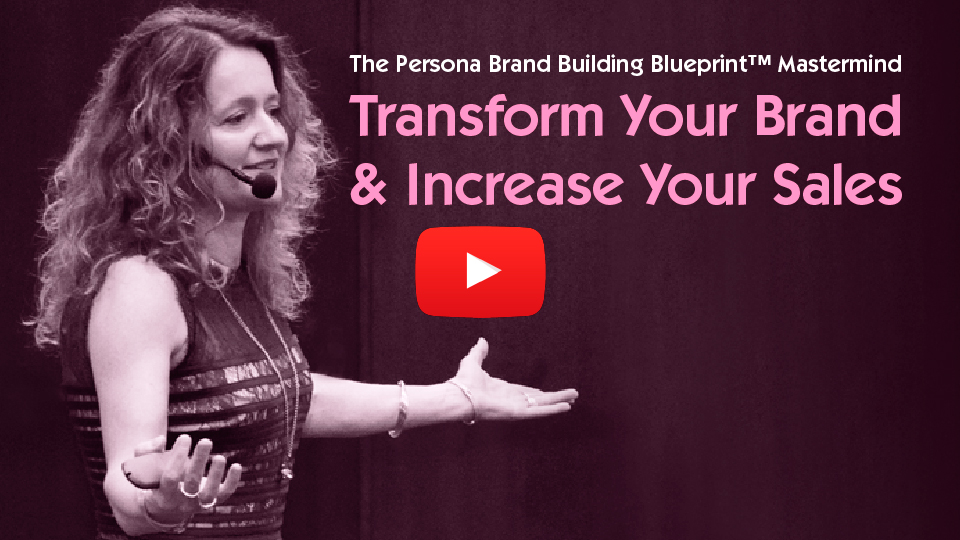Profitable Lessons from Luxury Brand Leaders, Brand Positioning for Premium Pricing
/0 Comments/in Luxury Brand, Luxury Branding /by Lorraine Carter7 Powerful Components Of A Lasting Luxury Brand
/0 Comments/in Luxury Brand, Luxury Branding /by Lorraine CarterThe landscape for luxury brands is changing in a dramatic way. According to the latest edition of the annual Bain Luxury Study, the personal luxury goods market experienced nearly flat growth (defined as growth of less than 3%) for the third year in a row as of the end of 2016.[1] It’s a sharp contrast with the rapid expansion the luxury brand market has seen in the previous two decades.
And the market itself isn’t the only thing changing; the luxury consumer and the sheer definition of what it means to be a luxury brand have shifted as well. According to the 2017 State of the Luxury Industry Study, which surveyed some of the foremost influencers in the luxury space, “ideas that have [previously] defined luxury – aspiration, status, exclusivity, wealth – have taken on negative connotations. The new luxury is not a showoff.”[2]
This new and modern landscape means that now more than ever, brand strategy is paramount for purveyors of luxury goods and services. Here are seven brand values a modern luxury brand should focus on to stay relevant (not to mention well-loved) in an ever-more-competitive marketplace.
7 Luxury Brand Factors Needed to Stay Relevant and Thrive
1. Luxury Brand Innovation
The definition of luxury is no longer entirely up to the luxury brand. As technology and access to technology improves more and more with each passing year, the definition of luxury lies in the hands of the customer. Consumers have spoken, and they crave innovation.
In the State of the Luxury Industry survey cited above, luxury influencers were asked about the most important business priorities for luxury brands in the year ahead. More than 600 of those surveyed cited innovation as a critical strategic priority.
And it’s not simply about going high-tech either. It’s up to luxury brands to innovate with;
- Novel products
- New services
- Forward-thinking marketing strategies and
- Contemporary ways to engage with affluent customers
When it comes to product, blending form and function is a key component of innovation, as the modern consumer is as concerned with a product’s usefulness as with how it looks and feels.
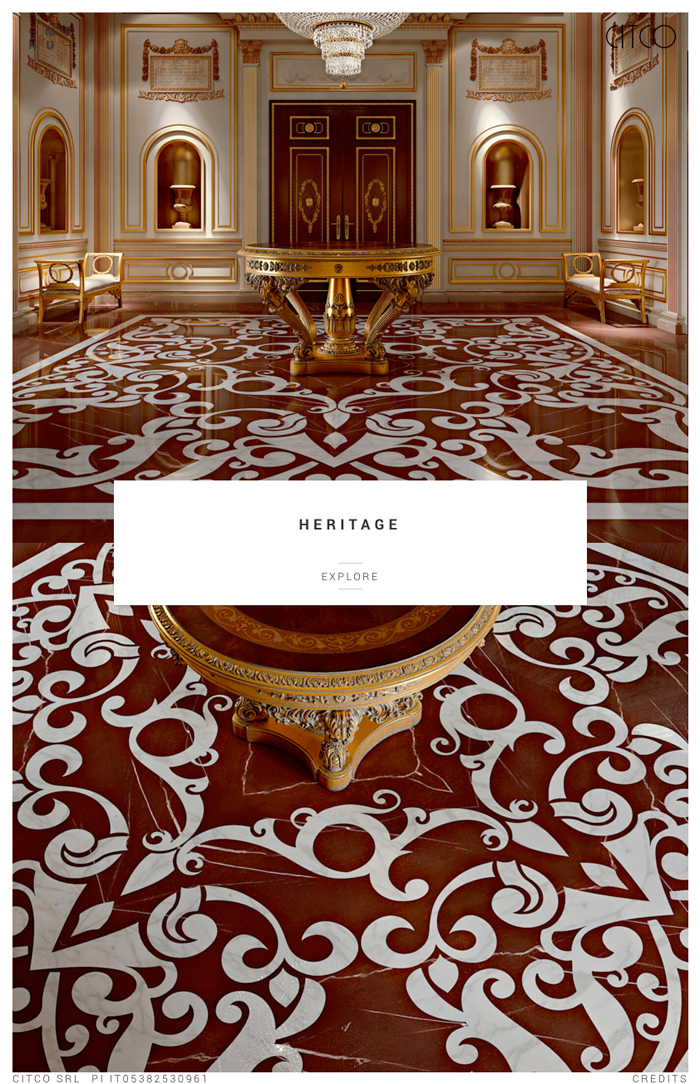
Image via Citco
Italian luxury design brand Citco has paved the way with innovation, creating new means of bringing a classic luxury material–marble–into the homes of consumers. When we think of marble we traditionally think of countertops and floors, but Citco’s designers use the prized rock to craft furniture, accessories, ornate wall coverings and more.[3]
Marble itself is nothing new, but Citco uses it in an innovative way to stay fresh and interesting in the minds of luxury consumers. Remember, it’s not always about reinventing the wheel, but finding forward-thinking ways to use the proverbial wheel to engage with luxury customers.
Related: Design Is NOT Branding, 10 Things Every Business Owner and Entrepreneur Should Know
Identifying your brand values is one thing, but putting them to work in your business day in and day out is another! It comes down to having a well-structured brand strategy. Get professional direction building your brand strategy so that it underpins your business goals and makes a lasting impression in the minds of your customers. Get in touch here.
2. Luxury Brand Personalization
Over the past decade, we’ve seen a sweeping shift from bricks-and-mortar storefronts to online shopping, with traditional powerhouses like Sears and Macy’s closing physical locations in record numbers to focus on online efforts. Luxury brands, however, have lagged behind, maintaining a focus on expansion through physical storefronts.
The result is a deficit in the digital environment for many luxury brands.
The modern luxury consumer has forged ahead, though, and this clientele now demands that the online shopping experience of their favourite high-end brands is very personalized like that of e-commerce giants like Amazon and ASOS.
The contemporary luxury consumer wants to shop where and when she or he pleases. According to Deloitte’s Global Powers Of Luxury Goods Study, 39% of luxury consumers want additional shopping channels (like home delivery) at their disposal, while 45% crave greater personalization in the products and services they’re offered. [4]
Related: Luxury Branding: How to Establish or Re-Position Your High-End Brand
Online luxury fashion house Net-A-Porter has done an exceptional job meeting the personalization demands of luxury consumers. The brand blazed a trail by taking high-fashion looks straight off the pages of Vogue and Harper’s Bazaar and making them accessible to customers with a single click.
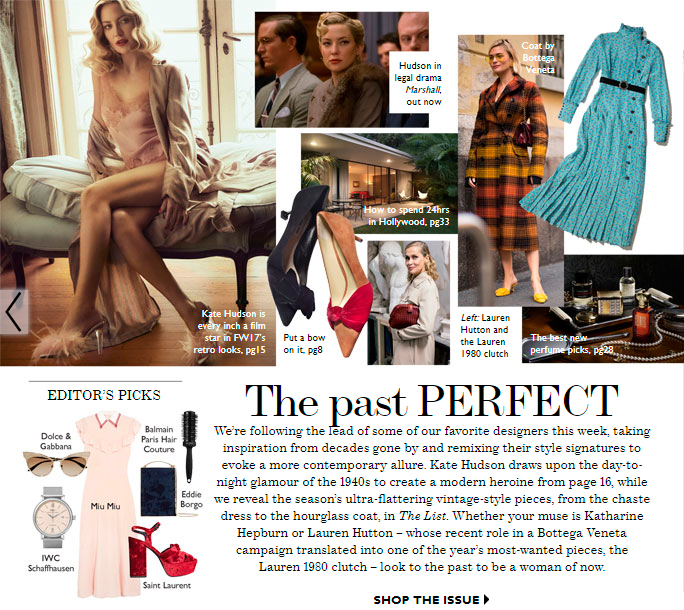
Image via Net-A-Porter
Despite the massive success, Net-A-Porter didn’t stop with simply aggregating and recommending products; it now partners with esteemed luxury brands like Burberry to create custom collections exclusively for the Net-A-Porter platform.[5]
By following Net-A-Porter’s example and seeking new ways to make the shopping experience a more personalized one, luxury brands will build trust and loyalty in the hearts of followers, which in turn drives revenue growth.
3. Social Responsibility Among Luxury Brands
The modern customer prefers to spend his or her money with brands that demonstrate social responsibility, and Millennials are leading the charge. Millennials are twice as likely to buy from brands that demonstrate strong management of environmental and social issues. Luxury brands aren’t immune to the trend.[6]
88% of UK and US Millennials and Generations Xers believe brands need to do more good.
The majority spend more on experiences rather than accumulating more ‘stuff’ and they are also driven by the ‘clean-label’ trend — the need to verify what’s in everything and where it came from.[7]
Many luxury goods depend on natural resources that, unfortunately, are in limited supply (think gold, precious gems and rare minerals). A socially responsible luxury brand must ask the tough questions and carefully consider how its business model impacts things like energy, climate, natural resources and supply chain sustainability.
Related: Purposeful Brands: Why Customers Are Prepared to Pay More
For centuries, diamonds have been synonymous with luxury. In recent years, however, the luxury jewellery staple has become problematic with the rise in awareness about conflict diamonds, or diamonds mined to support the regime of warlords and oppressive leaders.
One of the most well-known diamond purveyors, Tiffany & Co., has stepped up to meet the issue head-on. The brand helped to found the Initiative for Responsible Mining Assurance and has adopted a stringent zero-tolerance policy for stones mined in countries known for human rights violations.[7]
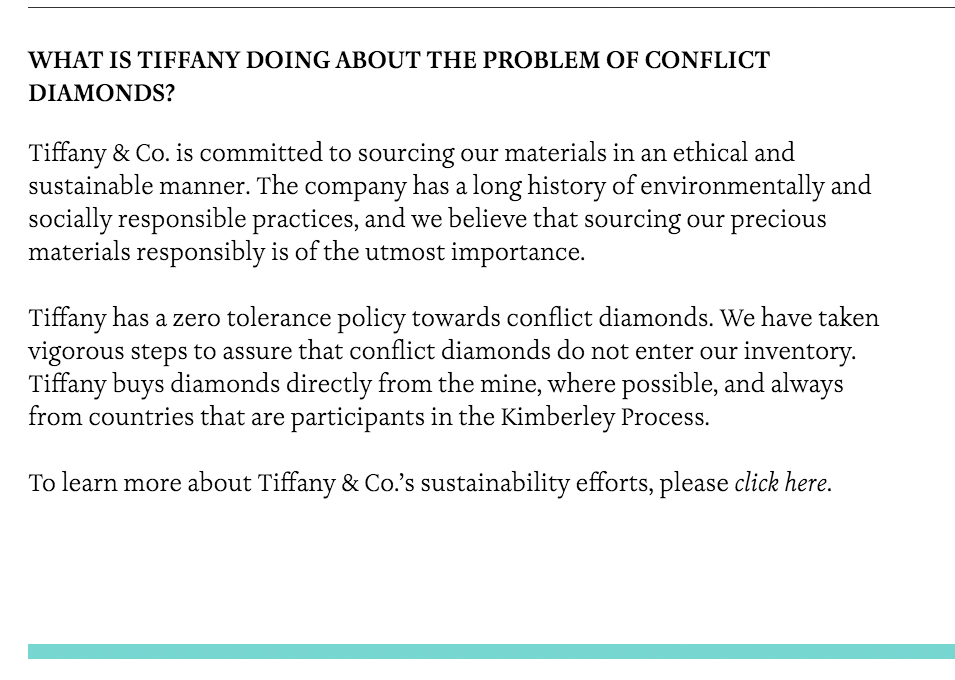
Image via Tiffany
The brand communicates its commitment to “traceability and transparency” through its brand collateral, like this video on “The Journey of a Tiffany Diamond.”
To become a lasting luxury brand, it’s important not only to adopt a strong and very authentic social responsibility brand strategy but to communicate it clearly to your audience across multiple channels.
Related: Brand CSR, The Business Case for Successful Branding and Social Good
Need to define the core brand values that connect you with your ideal audience? Our Personality Profile Performer™ is a highly effective programme that will take you step-by-step through the process of reevaluating and building your brand so you can increase your sales. Check it out here.

Build your standout brand here with Lorraine Carter
5. Luxury Brand Timelessness
To cement your place as a lasting luxury brand you must, well, last! One of the intrinsic components of luxury is the feeling of timelessness; a true luxury product never goes out of style.
For luxury brands, this means staying true to their long-established values while evolving and staying relevant to the modern customer.
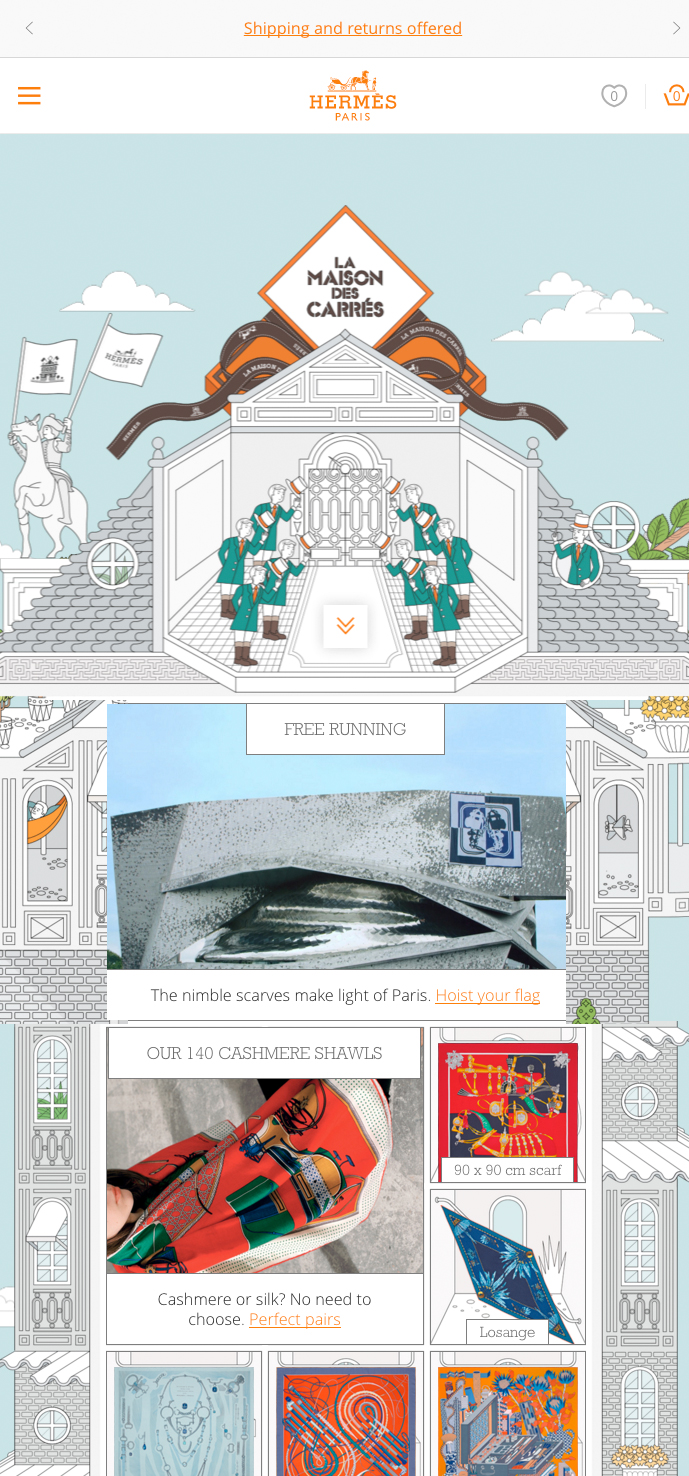
Image via Hermès
It’s difficult to discuss luxury without mentioning Hermès, and one reason for that is the brand’s mastery of timelessness. Case in point: Hermès silk scarves. They’ve been gracing the necks of luxury consumers since 1837, and their designs have remained largely unchanged since then.
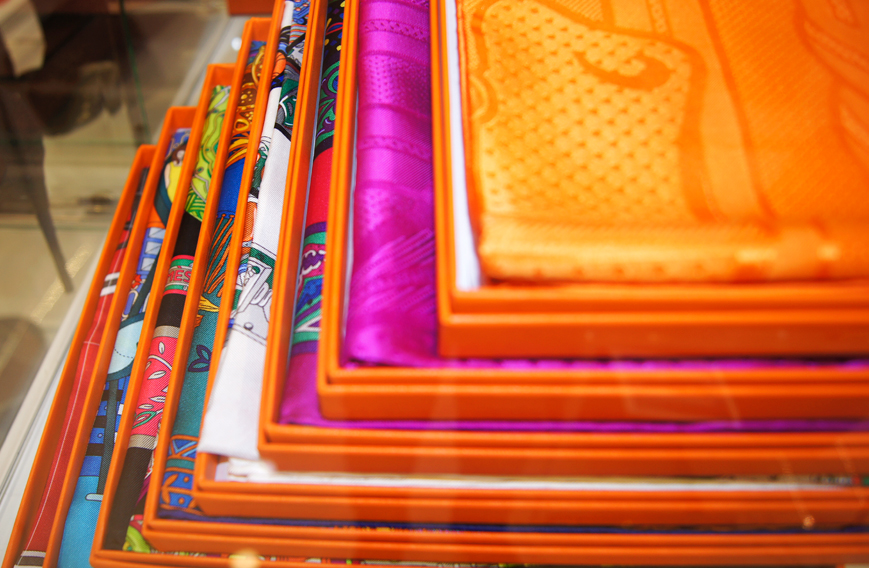
Image via Hermès
The brand, however, has adapted, embracing new marketing mediums like fashion blogger collaborations, digital video and Instagram influencers who sport the classic silk accessory.
Hermès strikes the perfect balance between relevance and timelessness and sets an example all lasting luxury brands should strive for.
6. Luxury Brand Inclusion
Traditionally, luxury branding has been focused on exclusivity. After all, the very nature of luxury is based on the understanding that it’s not something to be had by the masses. In recent years, however, the concept of exclusivity has taken on a negative connotation. For a lasting luxury brand, exclusivity cannot equal exclusion.
In our modern social and political landscape, it’s more important than ever for luxury companies to use their brand story to promote a brand culture of inclusion. This may cover race, nationality, sexual orientation, gender identity and more.
Related: How to Develop Your Brand Tone of Voice to Increase Sales
Luxury staple Gucci recently took the lead in the campaign for inclusiveness by partnering with Parks, an Italian organization dedicated to helping companies develop practices that support and value diversity.[8] Gucci took the group’s counsel to heart, releasing a 2017 pre-fall advertising campaign exclusively featuring models of colour.
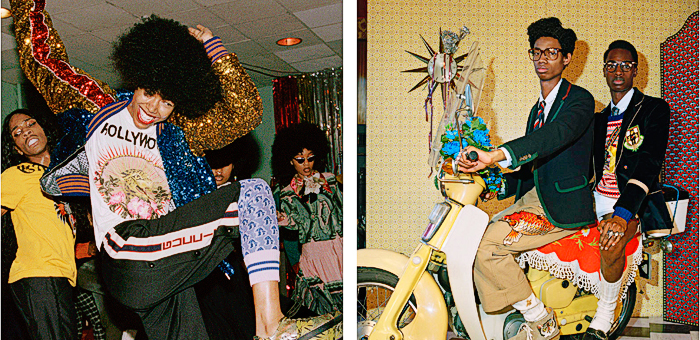
Image via Gucci
A modern luxury brand must take similar initiatives to incorporate inclusion into its brand values and live it through meaningful action.
7. Experiential Versus Physical Luxury Brand Interactions
As we touched on earlier, luxury consumers are moving away from the traditional bricks-and-mortar store experience in favour of an online, mobile one. Without as much opportunity for a face-to-face interaction with the customer, luxury brands must place a greater focus on creating a more positively memorable customer experience rather than simply a transaction with the consumer when the sale takes place.
According to Deloitte’s study, today’s luxury consumer cares less about using a luxury product or good to convey “what I have” and more to convey “who I am.” As such, a greater value is placed on the experience of using the product or service–how it makes the customer feel–versus simply the status of owning the product.
For a case study in experiential interactions, look no further than Silversea Cruises. This luxury cruise line is taking the cruise experience one step further than the ship itself, now offering extravagant pre- and post-cruise itineraries featuring once-in-a-lifetime experiences like spotting gorillas in the Rwandan jungle or watching penguin chicks hatch at the South Pole.[9]
From the pouring of tea into a delicate teacup to the drops of mist spraying from a waterfall, the scenes captured in the above video leave no question that the ‘Couture Collection’ is all about an unparalleled experience.
To become a lasting luxury brand, focus not just on creating a luxe product or service, but on designing an unforgettable customer experience around the customer journey, sales transaction and beyond. Nurture your customers every step of the way, including long after the sales process is completed.
It’s clear that the luxury market is at a crossroads, and luxury brands must either adapt or be left behind. Luxury brands that wish to overcome the flat-growth trend of the last several years must look to the customer to guide their brand strategy and be mindful of innovation, personalization, social responsibility, timelessness, inclusion and experience — all components the modern luxury customer demands.
Building a brand strategy can be challenging, but it’s one of the most important parts of your brand building process. Get expert guidance on creating and executing a clear brand strategy that aligns with your business goals. Get in touch here and let’s talk more about your unique goals.
Questions to Consider in Relation to Your Luxury Brand Strategy
- In what way is your luxury brand innovative? Are you clearly conveying that to your ideal customer?
- How can you create a more personalized luxury brand experience for your customers?
- Is your company socially responsible? Is there room for improvement with your luxury brand in this area?
- What are the most timeless elements of your luxury brand? How can you infuse those elements into modern branding channels?
- Is your luxury brand inclusive? How do you convey inclusion in your luxury brand collateral and communications?
- What are some ideas for focusing more on the experience with your luxury brand rather than merely the transaction?
- http://www.bain.com/publications/articles/luxury-goods-worldwide-market-study-fall-winter-2016.aspx
- https://www.forbes.com/sites/pamdanziger/2017/08/08/luxury-brands-innovation-is-no-luxury-but-a-necessity/#368a3b38303a
- http://robbreport.com/shelter/home-design/revered-italian-marble-company-opens-its-first-us-showroom-233379/
- https://www2.deloitte.com/content/dam/Deloitte/global/Documents/consumer-industrial-products/gx-cip-global-powers-luxury-2017.pdf
- http://www.vogue.co.uk/gallery/burberry-capsule-collection-net-a-porter-launch-images
- https://hbr.org/2016/02/luxury-brands-can-no-longer-ignore-sustainability
- https://hbr.org/2016/02/luxury-brands-can-no-longer-ignore-sustainability
- http://www.telegraph.co.uk/luxury/jewellery/tiffany–co-leading-the-way-in-ethically-produced-jewellery/
- http://wwd.com/business-news/human-resources/gucci-promotes-diversity-inclusion-parks-liberi-e-uguali-10810309/
- http://robbreport.com/travel/destinations/silversea-cruise-line-launch-collection-land-itineraries-2018-2752738/
About
Persona Branding & Design Consultants
Contact: Lorraine Carter
T: +353 1 832 2724
Carra House
Howth, Co. Dublin, Ireland
Copyright © 2007-2022 All rights reserved.
Persona Design Consultants Ltd.
Registered in Ireland: No. 201997
Member of


